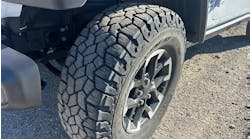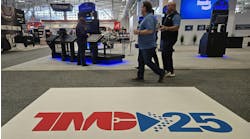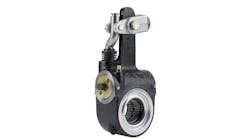Last-mile delivery has experienced unprecedented growth since the start of the pandemic. I’m reminded of it every Sunday night when I walk the dog and see stacks of cardboard boxes on the curb or on front porches.
Amazon dominated the online shopping market a few years ago. The boxes for recycling remain plentiful, but there are many more names on them these days. With retailers of all sizes concentrating more on online ordering and home delivery, the rise in last-mile commercial vehicles is expected to continue.
For the purpose of this discussion, I define last-mile vehicles as those typically in Classes 3-5 with rim diameters of 19.5 inches or less. While these vehicles may be similar in size and application, they are very different in terms of tires. For example, the Class 3 space is primarily reliant on light truck tires with 16-inch or 17-inch rim diameters. These tires are clearly identified by the letters “LT” in the tire size. The exceptions are the European C-metric tires, which have a light truck tire size without the actual letters “LT” in the size designation.
See also: What’s the next big thing in truck tires?
Dimensionally, the LT225/75R16 and the 225/75R16C are identical with a nominal diameter of 29.3 inches; however, the LT version has a 115/112 load index, whereas the European C-metric tire has a 121/120 load index. If the vehicle certification label calls for the LT version, then the European C-metric tire is a suitable replacement because the single and dual load index is higher. On the other hand, if the certification label specifies the C-metric tire, then the LT version is not a more cost-effective option because it has a lower load index and therefore less carrying capacity at the lower price.
Vehicles in the Classes 4-5 segment typically have tires with a 17.5-inch or 19.5-inch rim diameter. While they may seem like light truck tires because of their physical size and application, they are commercial truck tires by definition and must be serviced accordingly. Occupational Safety and Health Administration (OSHA) regulation 29 CFR 1910.177 applies to the servicing of tires and wheels on large vehicle-like trucks, tractors, and trailers. However, light truck tires designated “LT” are not covered by 1910.177, so they can be handled differently during service.
The biggest differences in service procedures are related to technician training and inflation. For the light truck tires designated LT, there are no OSHA training requirements. However, the European C-metric tires are not designated LT, so 1910.77 applies as it does for all of the 17.5-inch and 19.5-inch truck tires. Therefore, all technicians who service those tires must have OSHA-compliant training, whereas those who only service the LT tires do not have any required training.
Another area in which OSHA has specific requirements for truck tires without the LT designation is tire inflation. C-metric and tires with 17.5/19.5-inch rim diameters must be inflated with OSHA-compliant inflation equipment in an OSHA-compliant restraining device. While the average retail tire dealer has all of the necessary tools to properly inflate LT tires, they may not have the required equipment for the C-metric and 17.5/19.5-inch rim diameters. The technicians may also lack the proper training required by OSHA, which places the fleet in a difficult position if a tire failure results in an accident. A completely different set of rules governs the servicing of tires without the LT in the size designation. Vendor selection becomes more important when OSHA compliance is an issue during litigation.
See also: Tire makers discuss spec'ing commercial tires by duty cycle
Retreading is the next major difference. The LT and European C-metric tires can be retreaded, but many of them are not necessarily designed for an additional lifespan after the original tread is worn. On the other hand, name-brand 17.5 and 19.5 tires are engineered for retreading, and thousands of them are successfully retreaded every day to help fleets with last-mile vehicles lower operating costs. The all-steel casings are more durable than the fabric construction found on LT and C-metric, so retreading is easier. With an inflation maintenance program in place and followed regularly, fleets can expect multiple retreads from quality casings just like their 22.5-inch counterparts.
Last-mile tires are not getting cheaper, and performance differences between name-brand and offshore manufacturers can be significant. Maintenance plays a huge role. Last-mile fleets should expect costs to continue rising without an effective cradle-to-grave tire program that takes everything into account, especially in the area of inflation.
This article was originally published on FleetOwner.com.




